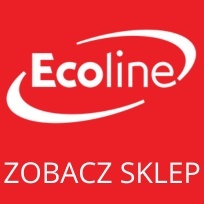

Powder coatings with a decorative metallic effect are produced using two well-known technologies: dry blend and bonding. During dry blending, the base powder is mixed with metallic effect pigments. In this process, the conductive metallic components (e.g. aluminium, zinc, copper or non-conductive, e.g. mica) are not bonded, but are only mixed with the base paint, resulting in a less stable coating. It is not recommended to recover dry-mixed inks because of the high risk of delamination of the resulting components.
farby@ecoline.com.pl | (+48) 606 348 394
Write to usBonding is a completely different process involving the permanent combination of base powder particles with pigments to create a metallic effect. It takes place at a controlled temperature, as a results homogeneous powder is created. This type of product is much more stable during application, gives the possibility of high repeatability of coating and can be recovered for reuse.
Final visual effect depends on many factors, such as type of a gun (electrostatic or Tribo), settings of the application, current parameters, grounding, powder recovery method (especially the percentage of waste powder in the process), method of powder collection (a fluidization tank is recommended), the complexity and shape of the coated parts, the repeatability of thickness, or wear of the gun’s consumable parts.
In order to reduce the risk of differences on the details, it is recommended to use one batch of powder to cover the entire project. However, it should be borne in mind that high standards maintained during the powder manufacturing process and slight color differences may occur between production batches. Therefore, before coating with a new batch of powder, verification of powder compliance should be tested on a coating line.
The key point when working with metallic powders include: regular checking, grounding of coated parts, maintaining the right amount of powder in the fluidization tank (recommended about 75% full), maintaining the recommended voltage value of 80 kV (the intensity is adjusted according to the type of parts), ensuring the right proportions of recovery and fresh powder (for bonded products, do not exceed 30% recovery).


